It seems that the traditional double-action/single-action semi-auto is enjoying a period of rediscovery by Gun Culture 2.0. Though the striker-fired semi-auto is still the king, some very knowledgeable firearms personalities are carrying Berettas, CZs, and even old all-metal S&Ws.
The impossibility of mastering the transition from a heavy DA trigger pull to a short, light SA pull, we have learned, has been greatly exaggerated. Safety configurations that were completely unappreciated until recently like “decock only” have become fairly commonplace. Concurrently, we’re seeing the increasing popularity of gadgets like the striker control device on Glock handguns. What are we to make of this trend?
Appendix Carry
This trend is closely correlated to the popularity of appendix carry. Appendix carry has a ton of benefits: it allows you to access the gun with either hand, surreptitiously get your hand on the gun early, and defend the gun in a physical altercation. Appendix carry also conceals a bit easier for some than strongside carry, and is faster on the draw. But it also comes with a downside. The gun’s muzzle is pointed at some pretty critical areas, including one’s genitalia and perhaps a femoral artery, especially when the wearer is seated. The longer, heavier trigger of the traditional DA pistol offers a perceptible margin-for-error when reholstering. So does the ability to check and/or control the movement of the gun’s hammer.
When first exposed to the idea of carrying a DA/SA gun for the stated reasons I was unimpressed. Safety, I thought, was just a matter of reholstering thoughtfully. Finger in register, well outside the trigger guard, clearing any clothing, and “looking” the gun into a well-designed holster. I held this belief until I switched from carrying a DAO revolver to carrying a M&P Shield. Overcoming the holster’s tension to seat the gun was a nerve-wracking experience. At that moment I began to appreciate the appeal of guns that offer a bit more manual control over of the cycle of operations.
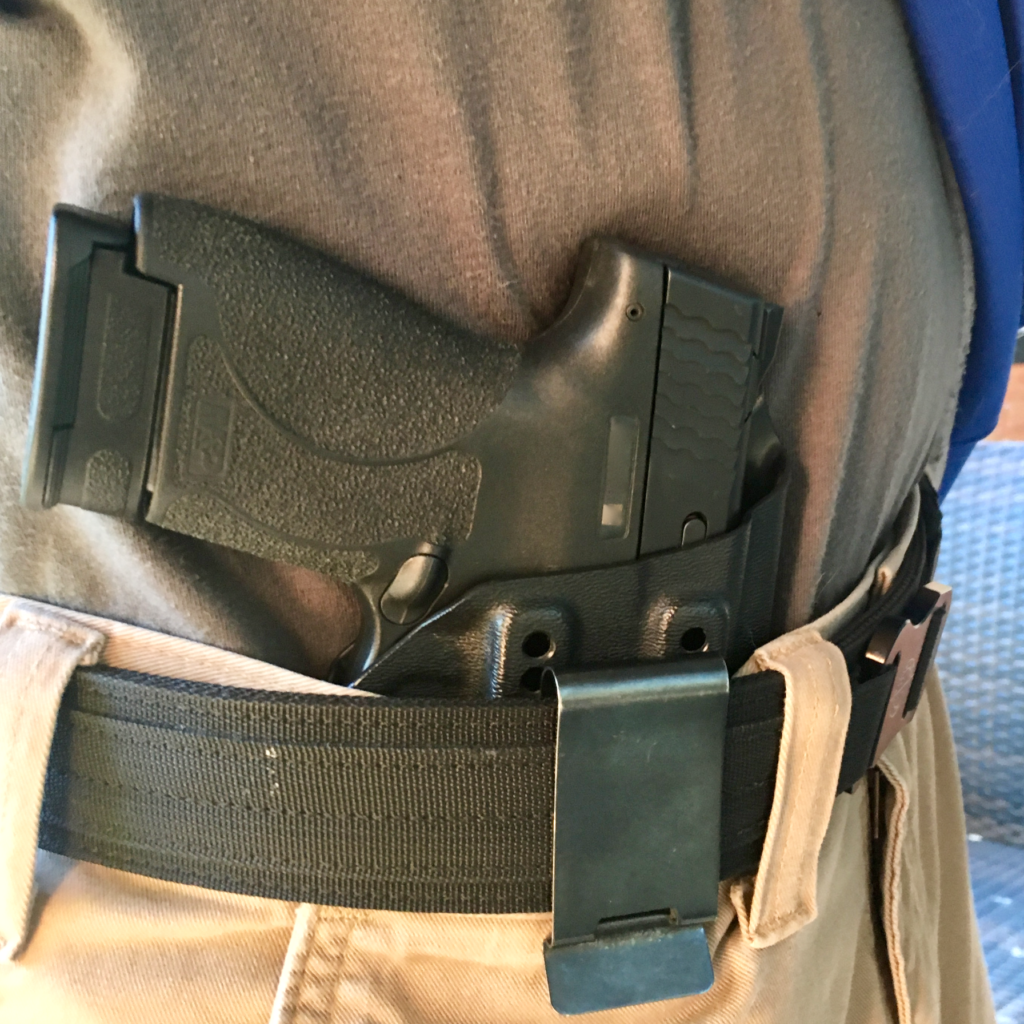
I thought about this a little bit more; some notable shooters carrying DA/SA guns shoot a LOT. Guys like Chris Baker are hitting the range several times per week. The sheer number of repetitions increases their statistical risk of a fatal attention lapse. But what about guys that don’t shoot this much? They probably fall into a higher risk category because the lack the experience of guys like Chris. It seems like a Catch-22 for which the DA/SA pistol is seen, at least by some, as the antidote. I think some shooters will shortly begin to remember – or recognize for the first time – the virtues of the 1911.
The Return of the 1911
The 1911 would seem to be purpose built for performing massive repetitions of appendix reholstering. Old slab-sides has three safeties, two of which are designed into the gun, and one of which is incidental.
The first safety on the 1911 is the most visible: the thumb safety. The 1911’s safety is nearly perfectly designed. Though I can shoot a Beretta reasonably well, its safety is backwards. Sweeping up is an unnatural action. The safety on the 1911 goes the “right” way: down. When presenting the gun with a high, firm grip a trained shooter’s thumb will easily find the safety and depress it downward. Keeping one’s thumb there helps to maintain a high, firm grip, provides some leverage against recoil, and ensures the safety doesn’t get bumped back on during firing.
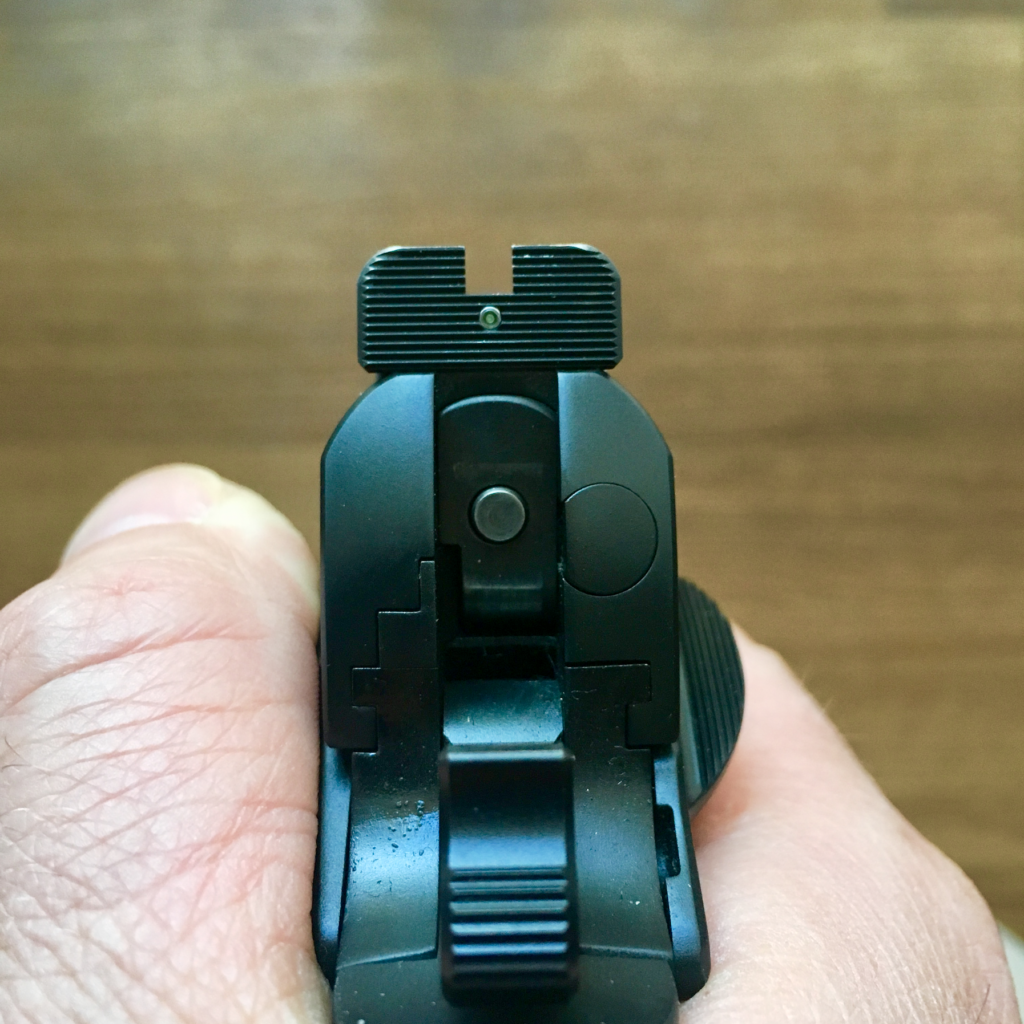
A well-fitted 1911 thumb safety is also easily re-engaged when it’s time to holster up. Simply replace the firing hand’s thumb from top to bottom and push up. That’s it. Now, there is always the possibility that one will forget to replace the 1911’s safety before reholstering (though to be fair, there is also the possibility of forgetting to decock a DA/SA gun). Fortunately with the 1911 design, there are some backup mechanisms we can depend on to keep us safe. One of these is a well-designed 1911 holster; some Kydex holsters feature a bump that will actuate a 1911s thumb safety. But if we’re already in the process of holstering, we’re already at risk, so let’s look at the next mechanical safety.
The 1911’s grip safety provides a redundant measure of protection when reholstering. I’ve found this to be especially true when using an appendix holster that holds the gun very close to the body. The hand is encouraged to loosen the full firing grip in order to get the gun close the to body and the muzzle safely into the holster. With some training it becomes second nature to release the grip safety (but still maintain a firm hold on the gun) while reholstering. This gives me a bit of peace of mind in knowing that if under a moment of extreme stress I forget to engage the thumb safety, the grip safety still provides a layer of protection.
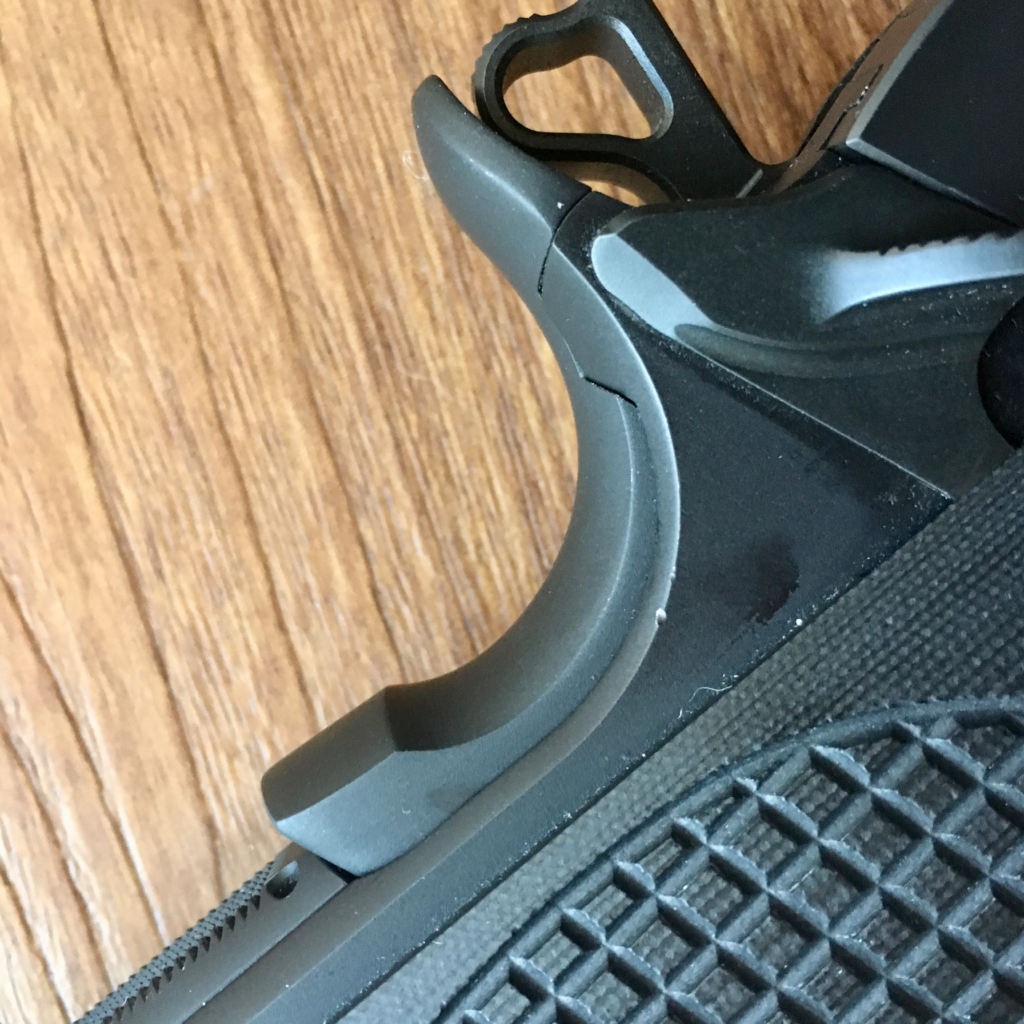
The third and final safety offered by the 1911 is an incidental safety. When reholstering, one has the ability to manually control the hammer. Of course, this is a behavioral modification that is subject to screw-ups – exactly the type of thing the mechanical safeties on the 1911 can help us prevent. However, training to “thumb check” the hammer upon reholstering can myelinate this pathway and make it second nature. In something of a happy accident, adjusting one’s firing hand to control the hammer also takes the hand off the grip safety – a sort of “belt and suspenders” approach.
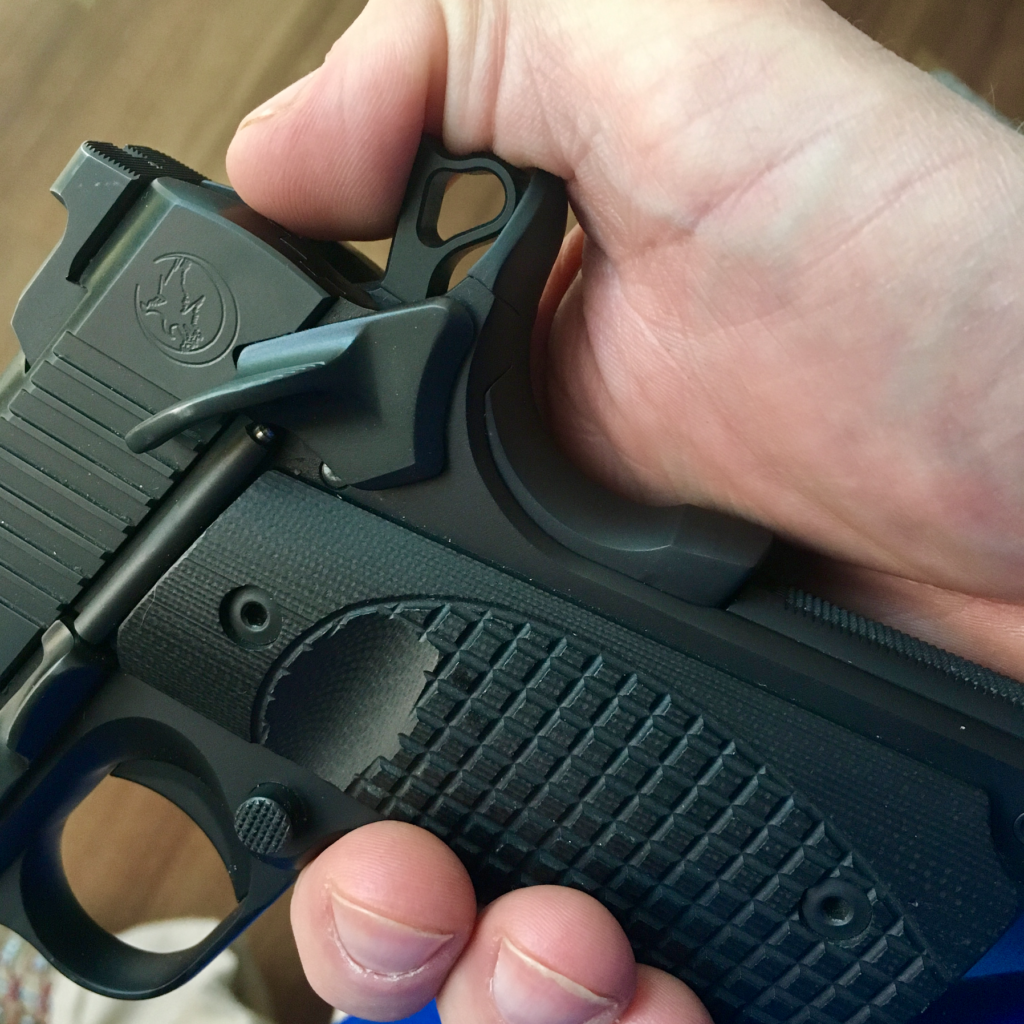
The Bottom Line
Mechanical safeties are no replacement for mindset. No mechanical implement can replace attentiveness and skill on the part of the user. However, mistakes do happen. People get tired, cold, and hungry. Vast numbers of repetitions can sap one’s attention, and perhaps dull one’s respect for the lethal power that is organic to a handgun. One misstep is all it takes. Mechanical safeties, long triggers, striker control devices are merely an addendum to our own attentiveness to safety. But, I would contend, they are a meaningful addition.
The 1911 isn’t going to the declared the “Glock Killer” anytime soon, and I’m not proselytizing for it. Clickbait title aside, what goes around comes around. It wouldn’t surprise me at all if the 1911 sees yet another era as the darling of the knowledgeable shooter. . . or at least a pretty big subset of those shooters. The safety features of the 1911 were a huge incentive leading me back to this platform, and they’ll probably appeal to some other shooters as well.
There’s some other benefits to the 1911 that poise it for a similar discovery by a new generation of shooters. I may detail these in a Part II. Stay tuned.

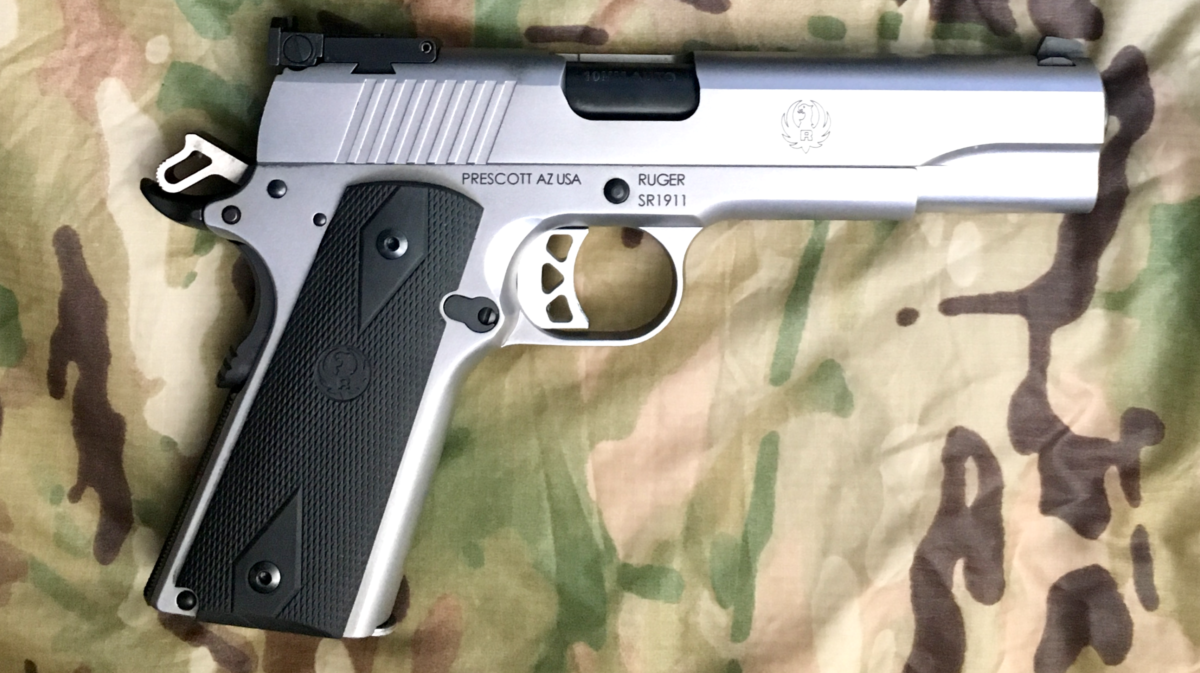
The 1911 (along with SA autos in general) seem to never really fade. I think their timeless ergonomics and inherent ease of shooting are part of this. Guns/actions in this (sport/hobby/endeavor/etc) along with caliber *gasp* are in a seemingly endless loop. Fueled by manufacturers and supercharged by the internet, it just never stops. Let one large agency adopt something, and suddenly conventional wisdom is turned on it’s head. Never mind the facts that most decisions such as this are driven more by economics, politics, graft and incompetent upper management. To me, I find the entire loop insanity.
It took quite a bit to convince myself AIWB was viable. I still refuse to carry anything besides a DA snub with this method. Too many things going on for me. A traditional OWB has the additional “safety” of a comparatively unencumbered draw and reholster. AWIB complicates this by adding belt buckles, zippers ( on your coat!), shirt tails, maybe a jacket drawstring and for some of us…a gut. I look at AWIB the same way I look at shoulder holsters…once it’s drawn, it’s going to take a process devoid of adrenaline before it goes back.
Just one view from the back seat of the short bus.
Jim,
Great comments. One thought did occur to me in reading your sentiment that reholstering in the AIWB position requires, “…a process devoid of adrenaline…” I’m not criticizing your viewpoint, and I’m certainly not debating AIWB versus any other carry methodology. I’m also not attempting to persuade you to carry AIWB. Rather, I guess what I’m doing is thinking out loud about a broader thought process around the intersection of risk and concealed carry.
That thought is this: a lot of things we do with a firearm would be done devoid of adrenaline in a perfect world. Most notably, firing a round in a restaurant/gas station/WalMart/furniture store/pharmacy with innocent personnel in and around the area would be done in a perfect state of calm. It is unlikely that we will have such a luxury if forced to defend ourselves with lethal force, so we train. I train almost every single day to automate these actions so they can happen quickly, efficiently, and – yes – safely, under stress.
The ultimate question that comes to mind is, if we can train to a state of comfort in taking a shot in a public space that is not a shooting range (where we face less self-imposed physical risk but vastly more ethical, civil, and legal hazard), can we not also trust ourselves to train to reholster safely?
The design remains simply that good.
Just put 8 mags worth through my old mil-spec Springfield yesterday, bone-stock save for tritium sights. Darn, it shoots great, even though I figured i’d be out of practice after a couple of months only shooting revolvers. Two dudes, one of them a youngblood, were also blasting away with their copies of Old Slabsides.
There’s something comforting to me about the 1911’s grip and slide safeties. I just cannot bring myself to carry a striker-fired gun. Though a wheel-gun is my primary carry, I’d have no trouble switching to my 1911 OWB if need be, my gun being a full-sized weapon.
Should have added how 1911s gave me an appreciation for another of Browning’s designs: the 1903 Hammerless. Though it’s a .32, I’ve been shooting my BIL’s a lot. He just got a second one. It’s a flawless little pocket gun and now is his preferred carry because he can hit anything at reasonable ranges with it, despite the merely notional sights on the gun. It rotates as his EDC with an older Kahr (all steel) 9mm.
I carried a 1911 at my first department… I then moved up to a high payin’ big city division who won’t allow single action guns on or off duty. Managed to find a 3913 I enjoy carrying off duty sometimes. I can’t appendix carry- too painful. I think if I did, though, re holstering would involve removing the holster, inserting the weapon, then returning it to the appropriate place on my belt.
Review Bruce Nelson’s 1980 article about how he actually carried his Summer Special holster. Cooper was wrong. Nelson’s “forward of hip” (Nelson didn’t call it appendix.) position was slightly rear raked with the muzzle clear of the body on the outside of the thigh. 2:00 O’clock v. 1:00 O’clock. That avoids the safety concerns of “appendage position” but retains the other advantages.
Does it really mitigate safety concerns though? Getting shot at 2 o’clock in the leg might be marginally better than getting shot at 1 o’clock in the leg, but I still can’t afford for either to happen. Even if the bullet doesn’t even hit me, what’s it going to do when it hits my floor/asphalt/concrete?
Great article Justin!
Mike (unless I have the wrong Mike), was it you who wrote a great article on the virtues of the 1911 in law enforcement?
I love revolvers and da/sa, but it does seem to make sense to have consistent manual of arms between pistol and long gun platforms. Any thoughts?
Yep, that was me, Ryan:
https://www.policeone.com/police-products/firearms/articles/481877006-The-case-for-the-1911/
Consistency between long guns and handguns is always imperfect, but I do think there are advantages in trying to maximize it. Of course, we can always learn to be effective with different systems if we put in the work.
Forgot to mention, along with my revolvers and da/sa beretta, I do have a Ruger 9mm 1911 that I love.
Thanks for all you guys do, your work does not go unappreciated!
Ryan
Thank you sir, and thanks for the kind comments about the articles!
I’m reminded of how personal these carry choices become. We’re all built differently, have different levels of comfort and training, and live different lives that influence our needs. While some basic principles remain universal, there are so many variables involved in our choice of guns and carry modes that it’s almost certain my solution won’t be yours.
In example, I simply can’t carry IWB or OWB in the traditional “strong side” position (say, 3 to 5 O’Clock) without significant discomfort. It aggravates my sciatic nerve, and in short time, the gun feels like a torture device. Additionally, due to my build, I have difficulty concealing a reasonably sized gun in that position—they just print too much to be discreet.
Appendix carry works great for me and I find it both comfortable and concealable. I readily admit it’s not for everyone, but it’s the ideal solution for yours truly.
Appendix carry is one of those subjects that tends to flush the Chicken Littles out of the bushes, with panicked cries that we’ll all shoot ourselves in the nards (not a reference to anybody here in these pages, just a general observation). I agree that it’s not a reasonable risk for some people, based on their personality, training, and discipline, but caution the naysayers not to generalize. The fact is, some people are disasters-in-waiting no matter what their carry mode is, so I’m not inclined to consider them in my own calculus.
I train around the limitations and risks of this carry mode, and have adopted habits, technologies, and routines that mitigate the risks. These provide redundant layers of safety, and manage the risk to my satisfaction. If I was carrying IWB on my strong side, I’d have to do the same.
The risk I’m comfortable with may be too much for you, and that’s cool. I have no issues with you making a different choice for yourself.
I do have issues with people who pretend their choices are risk free. Let’s face it. Carrying a gun ALWAYS incurs additional risk. If you wanted to eliminate all risk associated with carrying a gun, you would leave it at home, right? Your carry system might reduce your risk to a level that makes you feel comfortable, but don’t ever deceive yourself into thinking it’s risk free—that’s when Murphy will bite you. Maybe at 1 O’Clock, maybe at 4 O’Clock . . .
Be safe!
I think the overall point of this article might well have been missed. This wasn’t an endorsement of what is popularly known as appendix carry. The general thrust was speculation that the 1911 may see some resurgence among the newer generations of gun owners because of the undeniable popularity of the carry method. Comments here generally seem to be more focused on debating appendix carry, so I’m making the decision to close them.
See you guys Saturday!
Justin